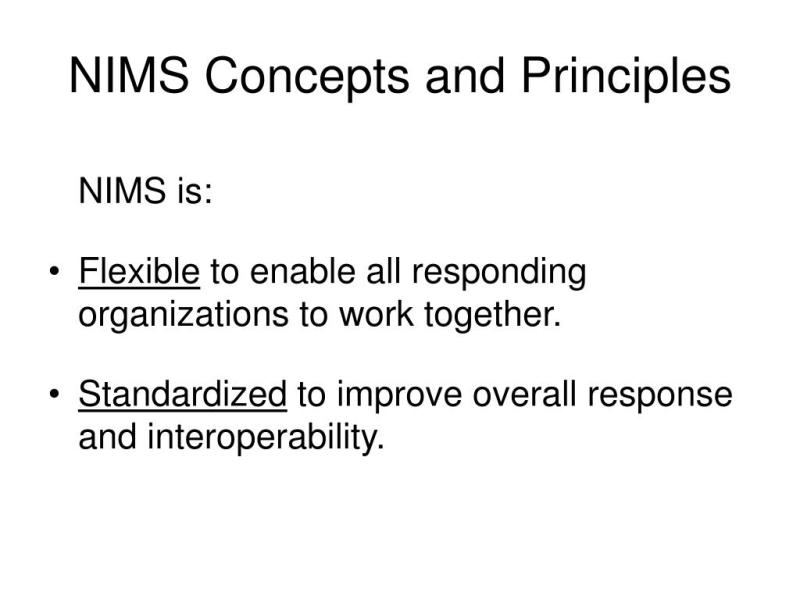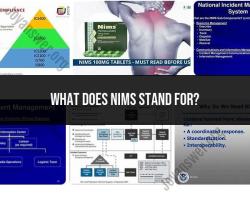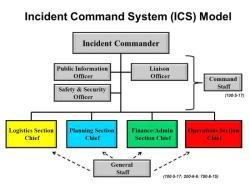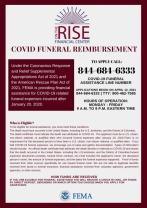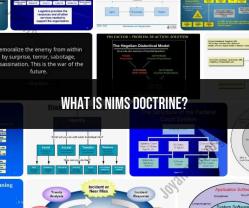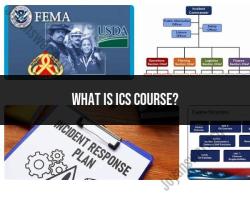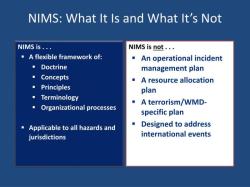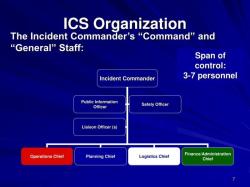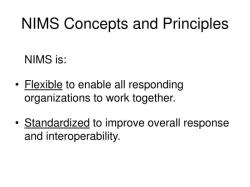What are the Nims guiding principles?
The National Incident Management System (NIMS) is a comprehensive framework that outlines principles, practices, and guidelines for managing and responding to incidents, emergencies, and disasters in the United States. The guiding principles of NIMS form the core foundations of the system and provide a common framework for effective incident management. The key NIMS guiding principles include:
Comprehensive Approach:
- NIMS emphasizes a comprehensive and integrated approach to incident management. It involves coordination and collaboration among all levels of government, non-governmental organizations, the private sector, and the public to address all aspects of incident response.
Incident Command System (ICS):
- NIMS promotes the use of the Incident Command System (ICS) as a standardized management structure for responding to incidents. ICS provides a flexible and scalable framework for organizing personnel, equipment, and resources in a hierarchical structure.
Unified Command:
- The concept of Unified Command is central to NIMS. It involves multiple jurisdictions and agencies working together through a common set of objectives, strategies, and tactics under a single unified structure.
Chain of Command and Unity of Command:
- NIMS emphasizes a clear chain of command to ensure effective management of resources and personnel. Unity of command ensures that each individual reports to only one designated supervisor, reducing confusion and enhancing accountability.
Integrated Communications:
- NIMS emphasizes the importance of integrated and interoperable communications. Effective communication systems help ensure that information is shared among all responding agencies and organizations.
Resource Management:
- NIMS provides guidelines for resource management to ensure that the right resources are at the right place at the right time. This includes processes for identifying, ordering, mobilizing, and demobilizing resources.
Common Terminology:
- NIMS promotes the use of common terminology to facilitate clear and consistent communication among responders from different agencies and jurisdictions. A standardized lexicon helps prevent misunderstandings.
Modular Organization:
- NIMS supports a modular organization that allows agencies to adapt their structures to the specific requirements of an incident. This flexibility ensures a scalable and efficient response.
Incident Action Plans (IAPs):
- The development and use of Incident Action Plans (IAPs) are essential components of NIMS. IAPs provide a comprehensive overview of incident objectives, strategies, and tactics and help guide the response effort.
Accountability:
- NIMS emphasizes the importance of accountability in incident management. Clear roles, responsibilities, and assignment of tasks help ensure that resources are used effectively and efficiently.
Continuous Improvement:
- NIMS encourages a culture of continuous improvement through training, exercises, and evaluations. After-action reviews and the incorporation of lessons learned contribute to ongoing enhancements in incident management capabilities.
These guiding principles are designed to foster a standardized and coordinated approach to incident management, enabling effective response and recovery efforts across all levels of government and the whole community. NIMS is a dynamic system that is adaptable to various incident types, sizes, and complexities.
What principles guide the National Incident Management System (NIMS)?
The National Incident Management System (NIMS) is guided by several key principles that ensure a standardized and effective approach to response and recovery from any incident, regardless of size, cause, or location. These principles are:
Unity of Effort:
- All responders, regardless of their agency or jurisdiction, work together with a common goal and shared understanding of roles and responsibilities. This eliminates confusion and duplication of effort during an incident.
Comprehensive Preparedness:
- Organizations and individuals at all levels, from local communities to federal agencies, prepare for potential incidents through planning, training, and resource development. This proactive approach ensures a swift and effective response when an incident occurs.
Standardized Approach:
- NIMS provides a common language and structure for all incident response operations. This includes standardized terminology, command and management structures, resource typing and mobilization, and communication protocols. This consistent approach facilitates interoperability and coordination among different responding agencies.
Scalability and Flexibility:
- NIMS principles can be adapted to fit the specific needs of any incident, regardless of size or complexity. The system can be scaled up or down to match the resources and personnel required for the situation.
Well-Being of Personnel:
- The safety and well-being of all personnel involved in incident response is a top priority. NIMS emphasizes planning for responder safety, fatigue management, and critical incident stress management.
Public and Stakeholder Engagement:
- Effective communication and collaboration with the public and other stakeholders are crucial for successful incident response and recovery. NIMS principles guide effective public information dissemination, community engagement, and stakeholder coordination.
Continuous Improvement:
- NIMS is an evolving system that is constantly being reviewed and updated based on lessons learned from past incidents. This commitment to continuous improvement ensures that the system remains effective and relevant in the face of changing threats and challenges.
By adhering to these principles, NIMS provides a robust framework for managing and responding to a wide range of incidents, ultimately protecting lives, property, and the environment.
I hope this explanation clarifies the key principles that guide the National Incident Management System. If you have any further questions about NIMS or its applications, please feel free to ask!
